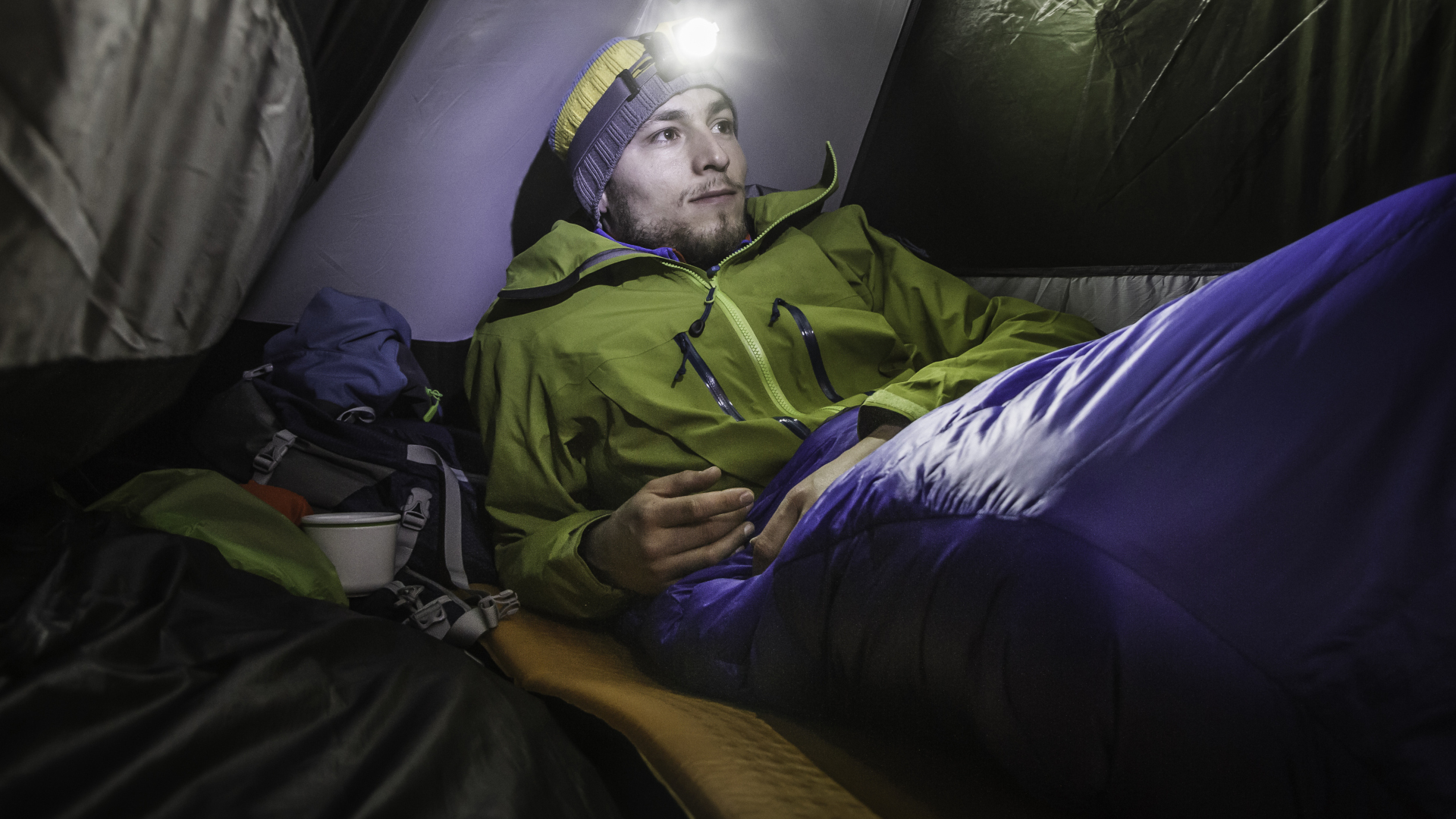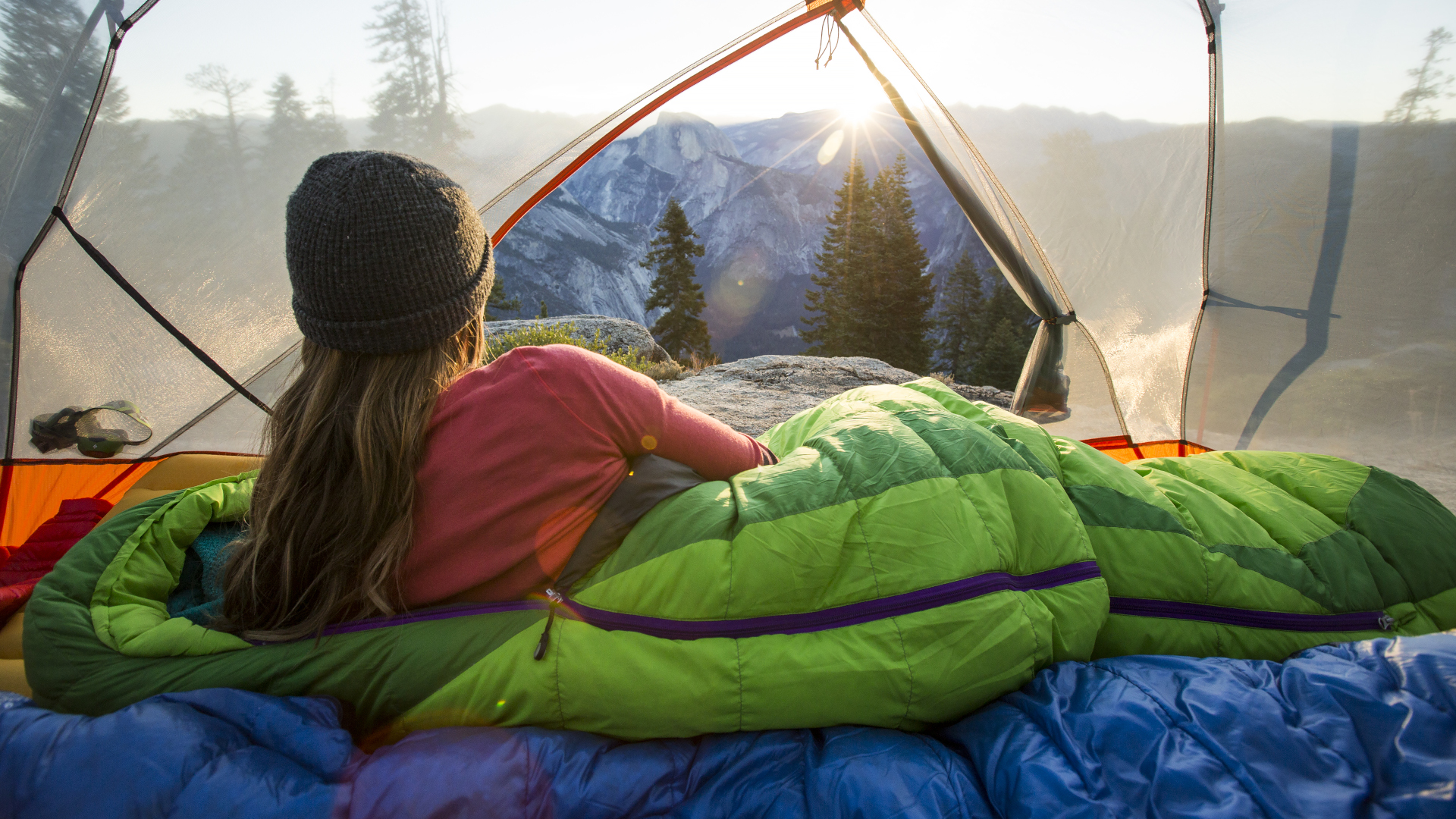Camping quilt vs sleeping bag: which is best for overnight adventures?
We size up the camping quilt vs sleeping bag debate to determine whether the lightweight, packable quilt makes a worthy opponent to the warm classic bag

What’s better than crawling into your cosy sleeping bag at the end of a long day of backpacking, zipping it up tight and getting some good shut eye as darkness falls in the forest? Well, according to some, lying down with a camping quilt is the superior option when it comes to good sleep on lightweight adventures. In this article, we examine the question of camping quilt vs sleeping bag to help you decide which is best for your lightweight adventures.
As outdoor enthusiasts, we’re all well-acquainted with the best sleeping bags, which come in different shapes like rectangular and mummy-style and varying degrees of warmth that makes them suitable for different – and in some instances all – seasons. While sleeping bags have started to come in increasingly lightweight and packable options in recent years, ideal for long treks, pros and adventurers on long treks often favor camping quilts instead.
What is the difference between a camping quilt and a sleeping bag?

As the name implies, a camping quilt is a cover for your body while you’re sleeping, rather than being a bag that you climb into that surrounds you on all sides. A camping quilt typically has no zip, but it does have a foot box which encloses around the bottom of your sleeping pad, and may have straps that wrap around the pad too. Made using the same fabric and insulation as a sleeping bag, a camping quilt is about half the size of a bag and doesn’t have a hood for your head. The result is that a camping quilt is smaller, lighter and fits easier in your pack.
But is it as good as a sleeping bag for actually keeping you warm and comfortable while sleeping? After all, there’s no insulation between your underside and your sleeping pad. Let’s take a closer look at some of the differences between camping quilts and sleepings bags.
Camping quilt vs sleeping bag: weight

If you’re looking to shed weight from your pack, most camping quilts are going to weigh less than even the lightest sleeping bag, because there’s less to them. There’s no hood, zip or fabric underneath you after all. That said, if you’re weighing up a camping quilt against a sleeping bag, be sure to check the weight of both items as the difference may be nominal.
Camping quilt vs sleeping bag: packability

Every spare ounce of space in your backpack matters when it comes to long journeys on foot and needless to say, a camping quilt will take up less space than a sleeping bag with a similar amount of insulation.
Further, because it takes up less space to begin with, you’re likely to compress it less, which means it won’t take as long to re-loft when you pull it out of your pack. If it’s cold and you just want to get straight into your tent, this means that you’ll warm up quicker under the quilt.
All the latest inspiration, tips and guides to help you plan your next Advnture!
Camping quilt vs sleeping bag: temperature regulation

Speaking of warmth, the most important aspect of your sleeping bag or camping quilt is that it keeps you warm enough on cold nights. Many fear that a camping quilt won’t provide as much warmth as a sleeping bag, and in many regards, this is true. A sleeping bag surrounds you on all sides, cinches tight around you to keep out drafts and comes with an adjustable hood.
That said, losing the layer of insulation on your underside may not matter as much as you think. Most insulation works by trapping air – when the weight of your body is pressing down on your sleeping bag, there isn’t much air to trap and in fact, most of the insulation is being provided by your pad anyway.

Further, as we mentioned, camping quilts come with foot boxes and straps, so there is a way to cinch them around your body, while the lack of a hood can be made up for by wearing a beanie or hiking hat, which you’re likely to wear on a cold night in a sleeping bag in cold weather anyway. Of course, you can also make up for the lack of warmth by wearing your base layers and wool socks to sleep, which you may do in a sleeping bag too.
On a very cold night, a sleeping bag is certainly the warmer option since camping quilts will allow in some drafts, but the difference may not be worth the extra weight in milder conditions.
So what about hot weather? In a sleeping bag, you have to unzip to cool off but with a quilt, you can just throw a leg out from underneath it without even waking up, like you do at home.
Camping quilt vs sleeping bag: comfort

Comfort is a very subjective experience as it is, but there are four main aspects that might make one more comfortable than the other for you.
The first is being able to sleep in your favorite position. Inside your sleeping bag, you’re rather limited in terms of possible positions: you’ve got your classic back sleeping and then you can roll onto either side as long as you keep both legs pinned together. Not so great if you like to bend your top knee, front sleep or starfish, and you often end up tangled up in your bag. With a camping quilt, the dream world is your oyster when it comes to positions with nothing to really restrict your arms and legs.
Next up is the fact that with a camping quilt, you’ll be lying directly on your sleeping pad. If your skin is bare, that’s probably not the most comfortable and may actually chafe, rub or cause you to sweat. However, you can easily overcome this problem by wearing base layers as you sleep.

Then there’s the question of the hood. Though it provides extra warmth and seals out drafts, if you turn your head to the side while you sleep, you can end up feeling like you’re suffocating when you’re in your bag. If you move around a lot when you sleep, you also sometimes end up with the hood on top of your face. No annoying hood touching your face when you’re sleeping with a quilt.
And finally, of lesser importance, some might find the zipper on a sleeping bag to be a annoying, whether it’s rubbing against your body or brushing your face in the middle of the night. In this case, a camping quilt might be the better option.
Camping quilt vs sleeping bag: breathability

Camping quilts and sleeping bags are both made using the same types of fabric and insulation and good ones will be breathable, however if you zip your bag all the way up and are a side or front sleeper, you end up breathing more inside your bag which may cause a little condensation to build up than if your mouth and nose stay on the outside.
Camping quilt vs sleeping bag: cost
Generally speaking, camping quilts will be cheaper than sleeping bags and they should be – they require less materials and manufacturing after all. In both cases, synthetic insulation will be more affordable than down options – our guide to down vs synthetic insulation explains more.
Can you use a sleeping bag like a quilt?

Having read all this, you might be asking yourself, can’t you just unzip your sleeping bag and use it as a quilt? Of course you can, but it won’t have the exact same results. The camping quilt has those straps designed to cinch to your body which your sleeping bag won’t, so it will be more drafty, while the hood might end up on your face again. The down insulation may also slide down to the sides of the bag where it is touching the ground instead of staying on top of your body too, meaning less actual warmth.
| Header Cell - Column 0 | Camping quilt | Sleeping bag |
|---|---|---|
| Weight | Usually under 1lb | The average sleeping bag weighs about 2.5lbs |
| Packability | Packs down very small | Doesn't pack down quite as small as a quilt |
| Temperature regulation | Foot box and straps help with insulation on cold nights, easier to cool off in warmer conditions. | Construction blocks out drafts, keeping you warmer, this is the better choice for subzero temps, more effort required to cool off on warm nights |
| Comfort | Allows for more movement and sleeping positions, no annoying hood or zip but your skin may be in direct contact with your pad | Less freedom of movement and sleeping conditions but no skin-to-pad contact |
| Breathability | Highly breathable | Highly breathable, though breathing inside the hood may cause some condensation build up |
Camping quilt vs sleeping bag: the verdict
Though a sleeping bag is still the warmest option over all, especially when it comes to sub-zero temperatures, definitely don’t discount camping quilts if you’re looking to slim down your load or lessen the strain on your wallet. The warmth to weight ratio of a camping quilt makes it a viable contender for backcountry sleeping, and the lightweight and packability might just push it over the edge when it comes to longer adventures.
This article is part of Advnture's Sleep Week 2022 (running from Monday 22 August to Sunday 28 August), our in-depth look at how to choose the best gear for sleeping outdoors and get a better night's rest in the backcountry.
Julia Clarke is a staff writer for Advnture.com and the author of the book Restorative Yoga for Beginners. She loves to explore mountains on foot, bike, skis and belay and then recover on the the yoga mat. Julia graduated with a degree in journalism in 2004 and spent eight years working as a radio presenter in Kansas City, Vermont, Boston and New York City before discovering the joys of the Rocky Mountains. She then detoured west to Colorado and enjoyed 11 years teaching yoga in Vail before returning to her hometown of Glasgow, Scotland in 2020 to focus on family and writing.

